Define Our Future
31 May 2024

(Image: Adobe)
Last week the European Space Policy Institute (ESPI) released their annual investment report, titled the “Investment in the European and Global Space Sector”. The report begins with an optimistic outlook, stating that Europe is in its “best investment cycle to date, with the last two years (2022 and 2023) comprising more than half of all investment since 2014.” However, the report also states that in 2023 the industry saw a year-on-year decline of 7% in private investments, and moreover a global investment decline of 32%, according to ESPI.
Much of this decline can be attributed to the drop in early-stage seed funding, with Europe facing a decrease of 71% in VC investment. As we have mentioned in our 2023 annual reports, this seemingly doesn’t play out well for higher-risk, early-stage startups, who rely on this support to realise their tech.
However, while later stage funding didn’t suffer the same fate, and should Europe wish to continue on its mission to become an innovative space technology hub, then it will surely remain the job of government and agency funding mechanisms to provide these early stage companies with the support they require in order to demonstrate and eventually validate their new, possibly disruptive technologies.
It does appear through recent events that European nations and ESA are turning up the dial when it comes to supporting commercialisation. In the November ESA summit last year the agency agreed to take a new approach to space launches, choosing to purchase launch services rather than develop their own, modelled on the US approach. For example, just last week ESA issued contracts to five private rocket companies under their Flight Ticket Initiative.
The agency also issued study contracts to Thales Alenia and German startup, The Exploration Company, to provide concepts for commercial cargo transport vehicles, providing Europe with more spaceflight autonomy. Additionally, on May 23rd, ESA and the EU adopted a new resolution calling for more support for European space companies in order to become more competitive.
These efforts signify a new determination, which seeks to strengthen European space leadership through commercial strategies, and also establish sovereign European space capabilities. However, these efforts will surely need to be maintained and increased, as global competition is also on the rise.
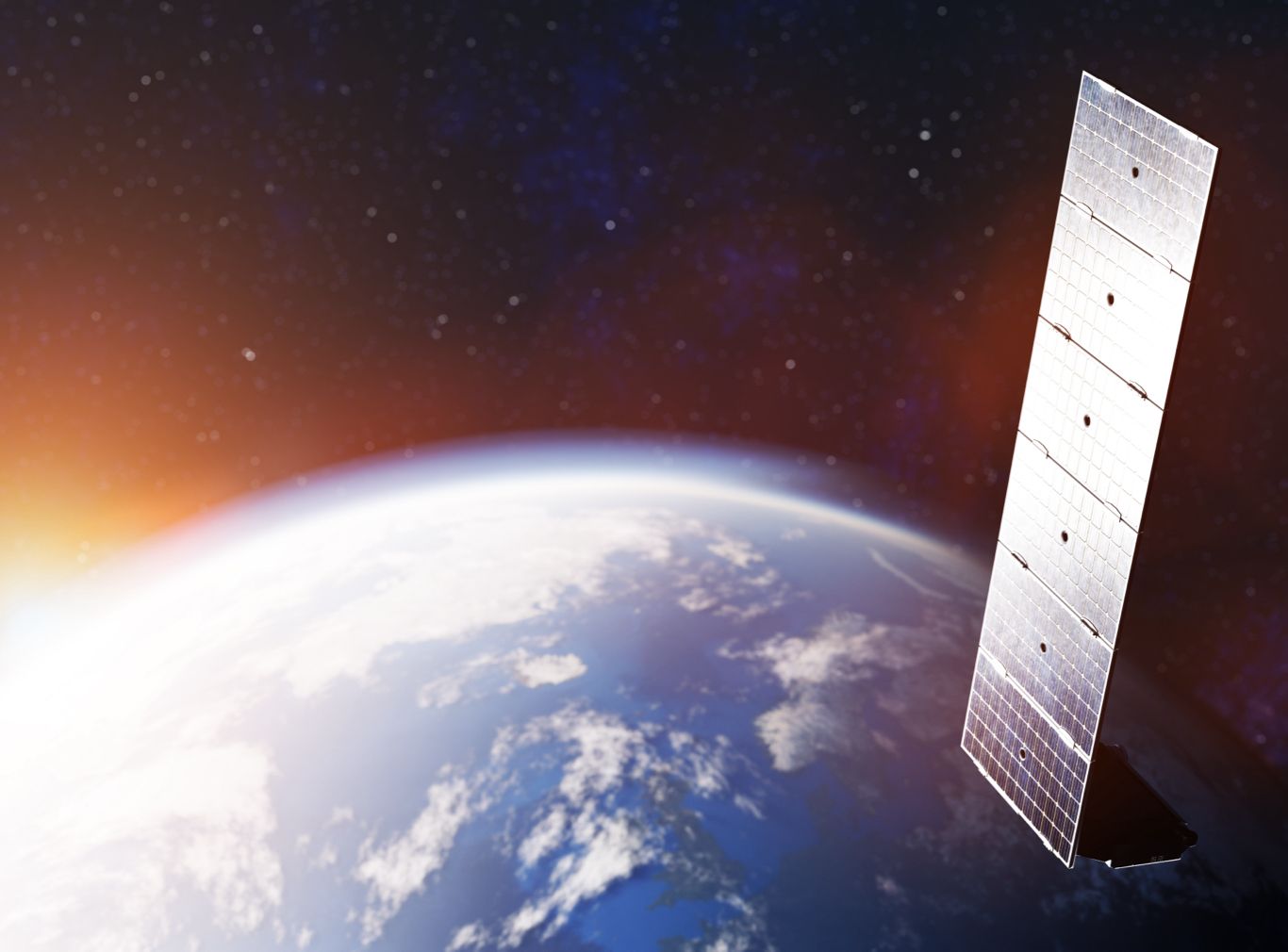
China to compete with Starlink? (Image: Adobe)
China expand commercial launch capabilities, plan a third mega-constellation, and strengthen international relations
China is of course one of these competitors, and is now demonstrating the utilisation of its own commercial sector in order to gain more leverage in the space sector. According to Blaine Curcio from satellite consultancy firm Novaspace, up until 2014 “…100 percent of space activity [in China] was done by the state.” However, between 2015 and 2021, their commercial industry grew 22.3% per year, and is on course to be valued at $320 billion in 2024.
While China are still some way behind the industry leaders SpaceX, we are set to see some familiar activity coming out of China in the coming months and years. Chinese company Hongqing Technology, linked closely to commercial launch company Landspace, has this week notified the International Telecommunications Union of its planned 10,000-strong satellite mega-constellation, named Honghu. These plans come after similar announcements regarding additional mega-constellations, named Guowang and Starlink G60, to consist of 13,000 and 12,000 satellites, respectively.
The announcement regarding Honghu seems likely to be beneficial for Landspace as well, who are developing their own reusable medium-lift rocket, named Zhuque-3. It does appear then that a SpaceX model is being replicated here, whereby satellites are built, launched and operated by the same entity (in this case Landspace holds a 48% share in Hongqing Technology).
Curcio also noted that on China they see the use of commercialisation as way of speeding up innovation, and supplying the nation with the capability to lift thousands of satellites into orbit. However, analysts also believe that the birth of the growing private sector is not to compete with SpaceX on the international market, but rather as a national security and defence imperative, particularly after witnessing how Starlink has worked so successfully in these areas.
However, there is clear evidence that China is also utilising its space capabilities as a means of establishing new partnerships and building international relations. They are successfully using their space station, Tiangong, for coopertaive missions and have made it available for use by all nations. They are also working with the United Nations Office for Outer Space Affairs (UNOOSA) to host international projects. This week China also launched a multi-mission communication satellite, PAKSAT MM1, a joint venture with Pakistan, and their Chang’e-6 lunar mission is carrying international payloads from Pakistan, France and Sweden.
While independant space capabilities are a national imperative for China, we clearly see ongoing evidence that they are also utilising this as a means to strengthen international relations.
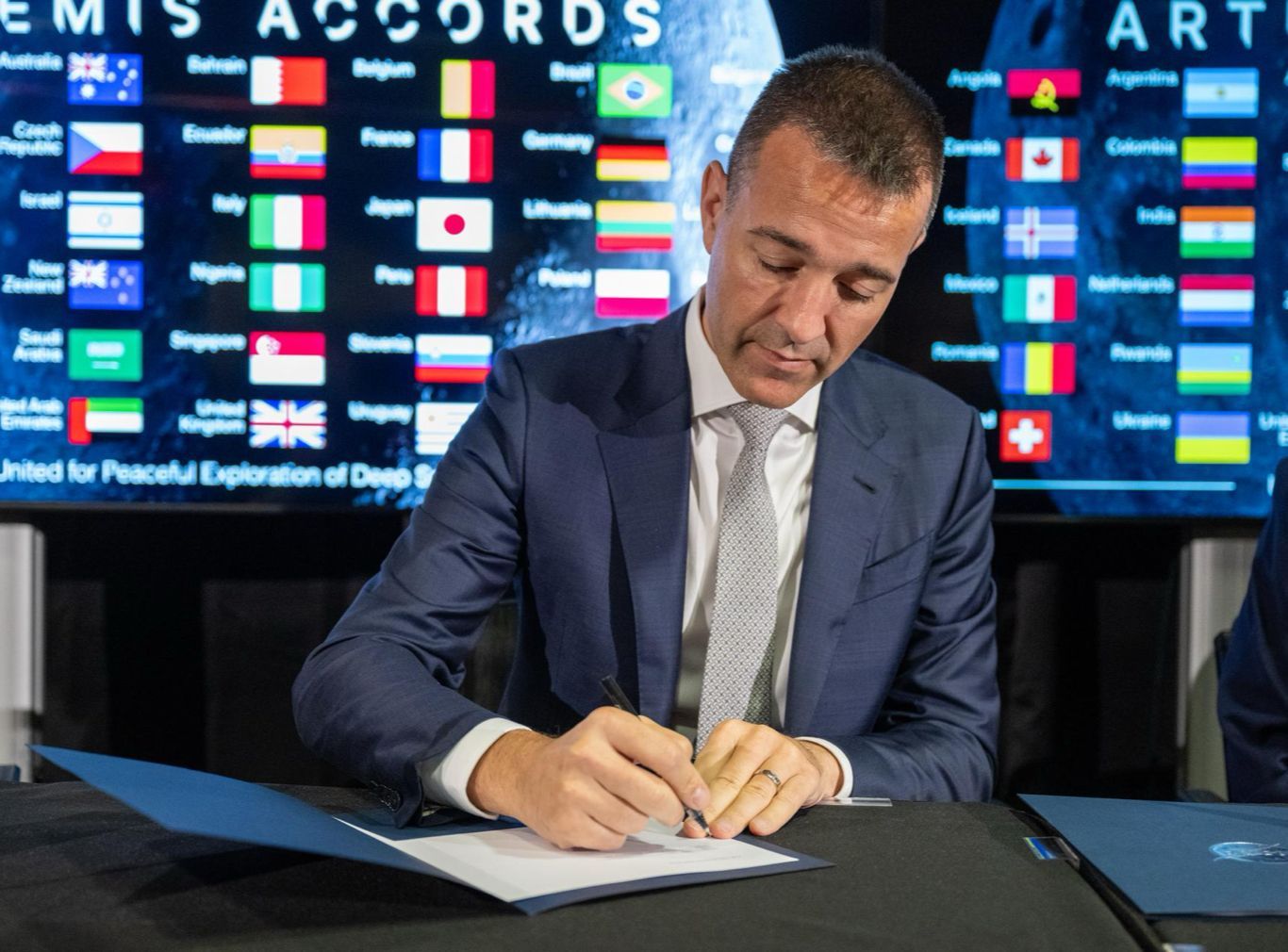
Slovak minister signs Artemis Accords (Image: NASA/Keegan Barber)
Chang’e-6 set for lunar landing, Korea aim for the Moon, US gain Artemis Accords members
Competition - or even the “new space race” - is well underway on the Moon. Since the beginning and 2023 until now we have seen six attempts to land on the Moon. These include the first ever successful commercial lunar mission, and the fourth and fifth nations to land softly on the surface (India and Japan, respectively).
China is set to land their latest mission, Chang’e-6, this weekend, after launching on its journey on May 3rd, and has been waiting in lunar orbit for the optimal conditions to land. The mission is now due to land on June 1st, and begin its primary goal of retrieving samples from the far-side for the first time. The mission also represents the broader Chinese aim of also establishing a permanent lunar presence under their International Lunar Research Station (ILRS) project, which is now supported by 23 nations and organisations.
The mission will also be followed by Chang’e-7 in 2026, which will study the lunar surface for signs of water ice (among other tasks), and will consist of a relay satellite, an orbiter, a lander, a rover, and a small flying probe. Furthermore, Chang’e-8 will launch in 2028, as part of its plans to construct their lunar station. It will continue to carry-out physical investigations of the Moon and also provide experiments in relation to in-situ resource utilisation (ISRU), a key component to establishing a long-term presence on the Moon.
At the moment the race appears mostly to be between the two space heavyweights, the US and China. While China are gaining partners through their ILRS project, the US have gained two more signatories for its outer space regulatory framework the Artemis Accords, with Peru and Slovakia joining this week. The Accords lay out rules and norms for activities on the Moon and outer space, and critically they also permit the utilisation of space resources, an area not comprehensively governed in any universally recognised legislation, such as the UN Outer Space Treaty (OST).
South Korea, another member of the Artemis Accords, have this week laid out their long-term plans for space exploration, after officially opening its new space agency this week, the Korea AeroSpace Administration (KASA). As well as aiming to create a privately-led space ecosystem, the agency will also lead the nation’s efforts to land on the Moon by 2032, and Mars by 2045.
Competition is growing on the Moon, and while recent landings have proven the success of more efficient and accurate landing technologies, they also represent an increasingly populated area which still lacks clear and comprehensive international rules and governance. Issues such as resource utilisation will be discussed at upcoming events such as the annual meeting of the UN Committee On Peaceful Uses of Outer Space (COPUOS) and the Working Group on Space Resources.
The efforts made here still stand as the best chance to achieve universal agreement on outer space affairs. However, while competition may be driving innovation, it also highlights the legal challenges we face in order to build and maintain a peaceful and sustainable future.
Define Our Future

(Image: SpaceX)
31 May 2024
ESPI report drop in investment while competition continues to grow, China aim for lunar landing and US expands Artemis partnership - Space News Roundup

Last week the European Space Policy Institute (ESPI) released their annual investment report, titled the “Investment in the European and Global Space Sector”. The report begins with an optimistic outlook, stating that Europe is in its “best investment cycle to date, with the last two years (2022 and 2023) comprising more than half of all investment since 2014.” However, the report also states that in 2023 the industry saw a year-on-year decline of 7% in private investments, and moreover a global investment decline of 32%, according to ESPI.
Much of this decline can be attributed to the drop in early-stage seed funding, with Europe facing a decrease of 71% in VC investment. As we have mentioned in our 2023 annual reports, this seemingly doesn’t play out well for higher-risk, early-stage startups, who rely on this support to realise their tech.
However, while later stage funding didn’t suffer the same fate, and should Europe wish to continue on its mission to become an innovative space technology hub, then it will surely remain the job of government and agency funding mechanisms to provide these early stage companies with the support they require in order to demonstrate and eventually validate their new, possibly disruptive technologies.
It does appear through recent events that European nations and ESA are turning up the dial when it comes to supporting commercialisation. In the November ESA summit last year the agency agreed to take a new approach to space launches, choosing to purchase launch services rather than develop their own, modelled on the US approach. For example, just last week ESA issued contracts to five private rocket companies under their Flight Ticket Initiative.
The agency also issued study contracts to Thales Alenia and German startup, The Exploration Company, to provide concepts for commercial cargo transport vehicles, providing Europe with more spaceflight autonomy. Additionally, on May 23rd, ESA and the EU adopted a new resolution calling for more support for European space companies in order to become more competitive.
These efforts signify a new determination, which seeks to strengthen European space leadership through commercial strategies, and also establish sovereign European space capabilities. However, these efforts will surely need to be maintained and increased, as global competition is also on the rise.
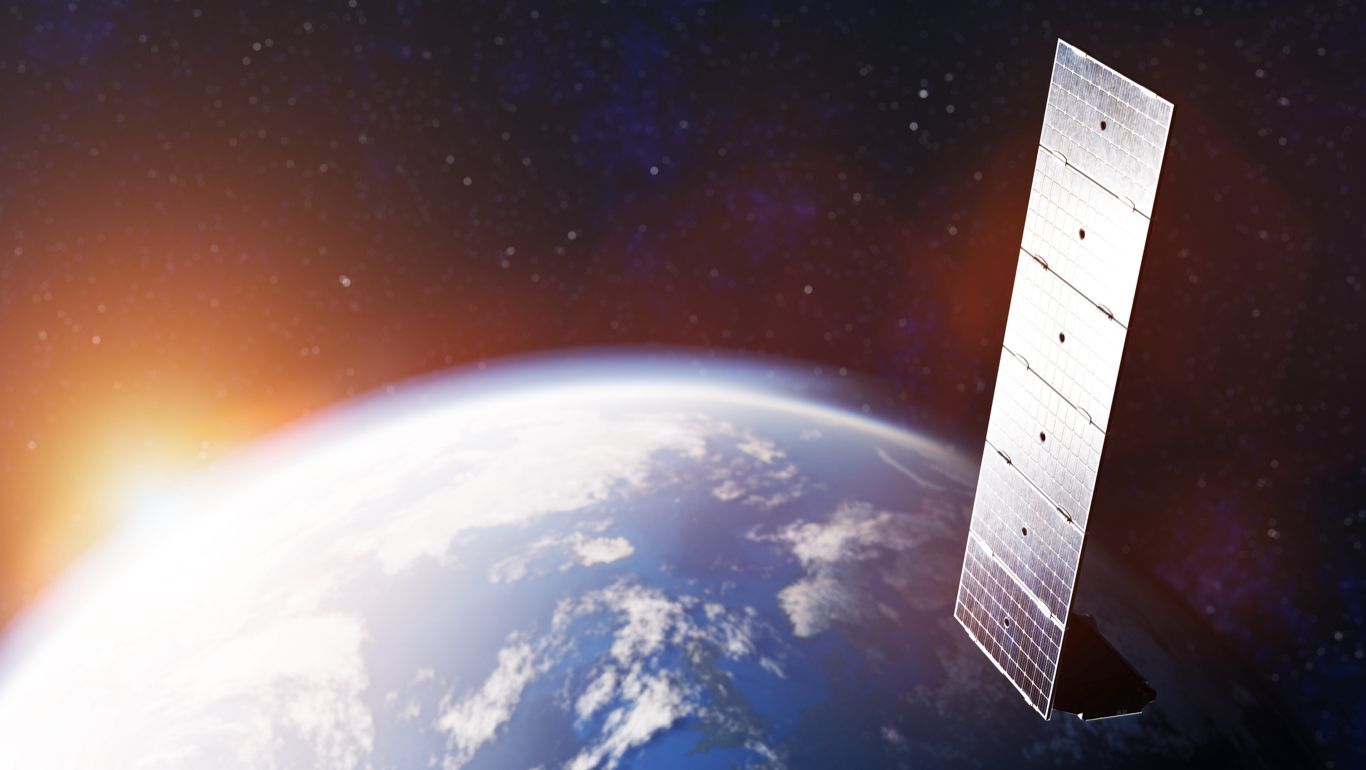
China to compete with Starlink? (Image: Adobe)
China expand commercial launch capabilities, plan a third mega-constellation, and strengthen international relations
China is of course one of these competitors, and is now demonstrating the utilisation of its own commercial sector in order to gain more leverage in the space sector. According to Blaine Curcio from satellite consultancy firm Novaspace, up until 2014 “…100 percent of space activity [in China] was done by the state.” However, between 2015 and 2021, their commercial industry grew 22.3% per year, and is on course to be valued at $320 billion in 2024.
While China are still some way behind the industry leaders SpaceX, we are set to see some familiar activity coming out of China in the coming months and years. Chinese company Hongqing Technology, linked closely to commercial launch company Landspace, has this week notified the International Telecommunications Union of its planned 10,000-strong satellite mega-constellation, named Honghu. These plans come after similar announcements regarding additional mega-constellations, named Guowang and Starlink G60, to consist of 13,000 and 12,000 satellites, respectively.
The announcement regarding Honghu seems likely to be beneficial for Landspace as well, who are developing their own reusable medium-lift rocket, named Zhuque-3. It does appear then that a SpaceX model is being replicated here, whereby satellites are built, launched and operated by the same entity (in this case Landspace holds a 48% share in Hongqing Technology).
Curcio also noted that on China they see the use of commercialisation as way of speeding up innovation, and supplying the nation with the capability to lift thousands of satellites into orbit. However, analysts also believe that the birth of the growing private sector is not to compete with SpaceX on the international market, but rather as a national security and defence imperative, particularly after witnessing how Starlink has worked so successfully in these areas.
However, there is clear evidence that China is also utilising its space capabilities as a means of establishing new partnerships and building international relations. They are successfully using their space station, Tiangong, for coopertaive missions and have made it available for use by all nations. They are also working with the United Nations Office for Outer Space Affairs (UNOOSA) to host international projects. This week China also launched a multi-mission communication satellite, PAKSAT MM1, a joint venture with Pakistan, and their Chang’e-6 lunar mission is carrying international payloads from Pakistan, France and Sweden.
While independant space capabilities are a national imperative for China, we clearly see ongoing evidence that they are also utilising this as a means to strengthen international relations.
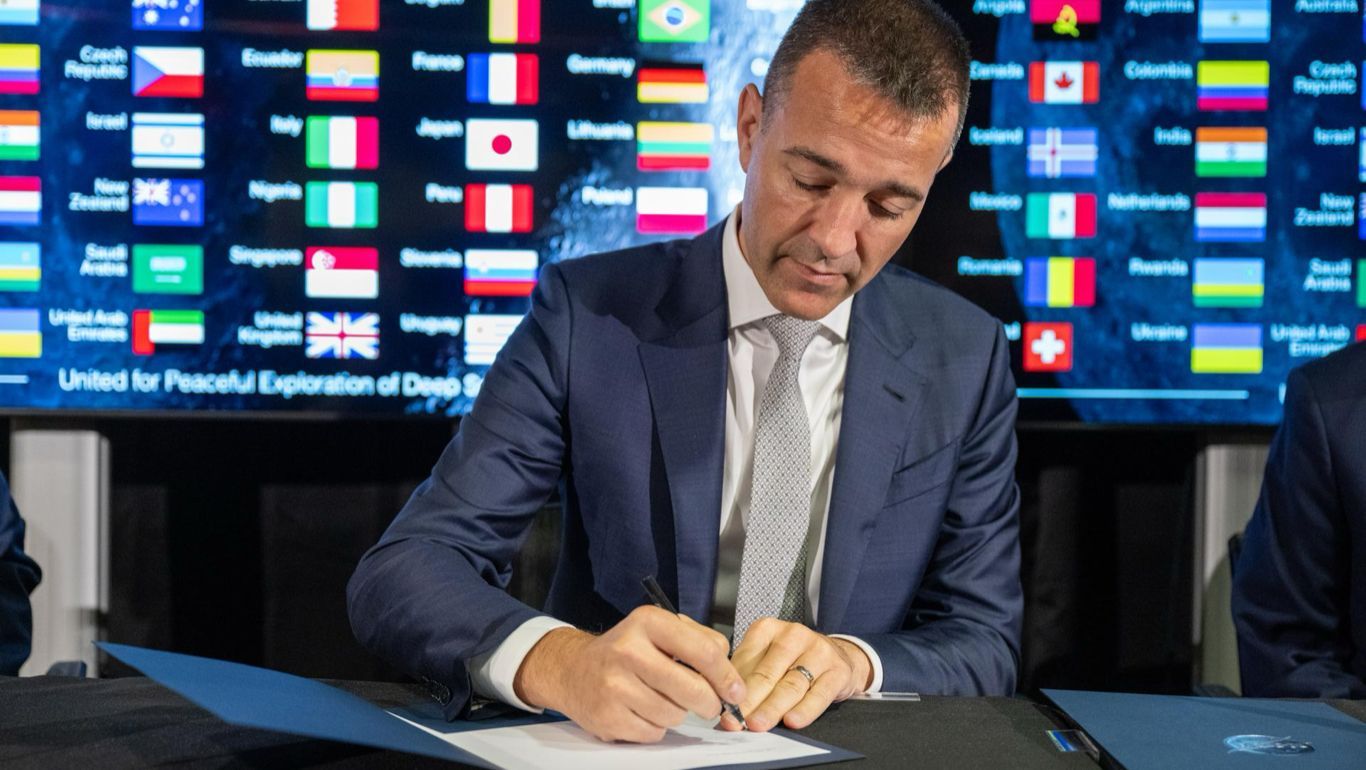
Slovak minister signs Artemis Accords (Image: NASA/Keegan Barber)
Chang’e-6 set for lunar landing, Korea aim for the Moon, US gain Artemis Accords members
Competition - or even the “new space race” - is well underway on the Moon. Since the beginning and 2023 until now we have seen six attempts to land on the Moon. These include the first ever successful commercial lunar mission, and the fourth and fifth nations to land softly on the surface (India and Japan, respectively).
China is set to land their latest mission, Chang’e-6, this weekend, after launching on its journey on May 3rd, and has been waiting in lunar orbit for the optimal conditions to land. The mission is now due to land on June 1st, and begin its primary goal of retrieving samples from the far-side for the first time. The mission also represents the broader Chinese aim of also establishing a permanent lunar presence under their International Lunar Research Station (ILRS) project, which is now supported by 23 nations and organisations.
The mission will also be followed by Chang’e-7 in 2026, which will study the lunar surface for signs of water ice (among other tasks), and will consist of a relay satellite, an orbiter, a lander, a rover, and a small flying probe. Furthermore, Chang’e-8 will launch in 2028, as part of its plans to construct their lunar station. It will continue to carry-out physical investigations of the Moon and also provide experiments in relation to in-situ resource utilisation (ISRU), a key component to establishing a long-term presence on the Moon.
At the moment the race appears mostly to be between the two space heavyweights, the US and China. While China are gaining partners through their ILRS project, the US have gained two more signatories for its outer space regulatory framework the Artemis Accords, with Peru and Slovakia joining this week. The Accords lay out rules and norms for activities on the Moon and outer space, and critically they also permit the utilisation of space resources, an area not comprehensively governed in any universally recognised legislation, such as the UN Outer Space Treaty (OST).
South Korea, another member of the Artemis Accords, have this week laid out their long-term plans for space exploration, after officially opening its new space agency this week, the Korea AeroSpace Administration (KASA). As well as aiming to create a privately-led space ecosystem, the agency will also lead the nation’s efforts to land on the Moon by 2032, and Mars by 2045.
Competition is growing on the Moon, and while recent landings have proven the success of more efficient and accurate landing technologies, they also represent an increasingly populated area which still lacks clear and comprehensive international rules and governance. Issues such as resource utilisation will be discussed at upcoming events such as the annual meeting of the UN Committee On Peaceful Uses of Outer Space (COPUOS) and the Working Group on Space Resources.
The efforts made here still stand as the best chance to achieve universal agreement on outer space affairs. However, while competition may be driving innovation, it also highlights the legal challenges we face in order to build and maintain a peaceful and sustainable future.
Share this article
31 May 2024
ESPI report drop in investment while competition continues to grow, China aim for lunar landing and US expands Artemis partnership - Space News Roundup


(Image: Adobe)
Last week the European Space Policy Institute (ESPI) released their annual investment report, titled the “Investment in the European and Global Space Sector”. The report begins with an optimistic outlook, stating that Europe is in its “best investment cycle to date, with the last two years (2022 and 2023) comprising more than half of all investment since 2014.” However, the report also states that in 2023 the industry saw a year-on-year decline of 7% in private investments, and moreover a global investment decline of 32%, according to ESPI.
Much of this decline can be attributed to the drop in early-stage seed funding, with Europe facing a decrease of 71% in VC investment. As we have mentioned in our 2023 annual reports, this seemingly doesn’t play out well for higher-risk, early-stage startups, who rely on this support to realise their tech.
However, while later stage funding didn’t suffer the same fate, and should Europe wish to continue on its mission to become an innovative space technology hub, then it will surely remain the job of government and agency funding mechanisms to provide these early stage companies with the support they require in order to demonstrate and eventually validate their new, possibly disruptive technologies.
It does appear through recent events that European nations and ESA are turning up the dial when it comes to supporting commercialisation. In the November ESA summit last year the agency agreed to take a new approach to space launches, choosing to purchase launch services rather than develop their own, modelled on the US approach. For example, just last week ESA issued contracts to five private rocket companies under their Flight Ticket Initiative.
The agency also issued study contracts to Thales Alenia and German startup, The Exploration Company, to provide concepts for commercial cargo transport vehicles, providing Europe with more spaceflight autonomy. Additionally, on May 23rd, ESA and the EU adopted a new resolution calling for more support for European space companies in order to become more competitive.
These efforts signify a new determination, which seeks to strengthen European space leadership through commercial strategies, and also establish sovereign European space capabilities. However, these efforts will surely need to be maintained and increased, as global competition is also on the rise.
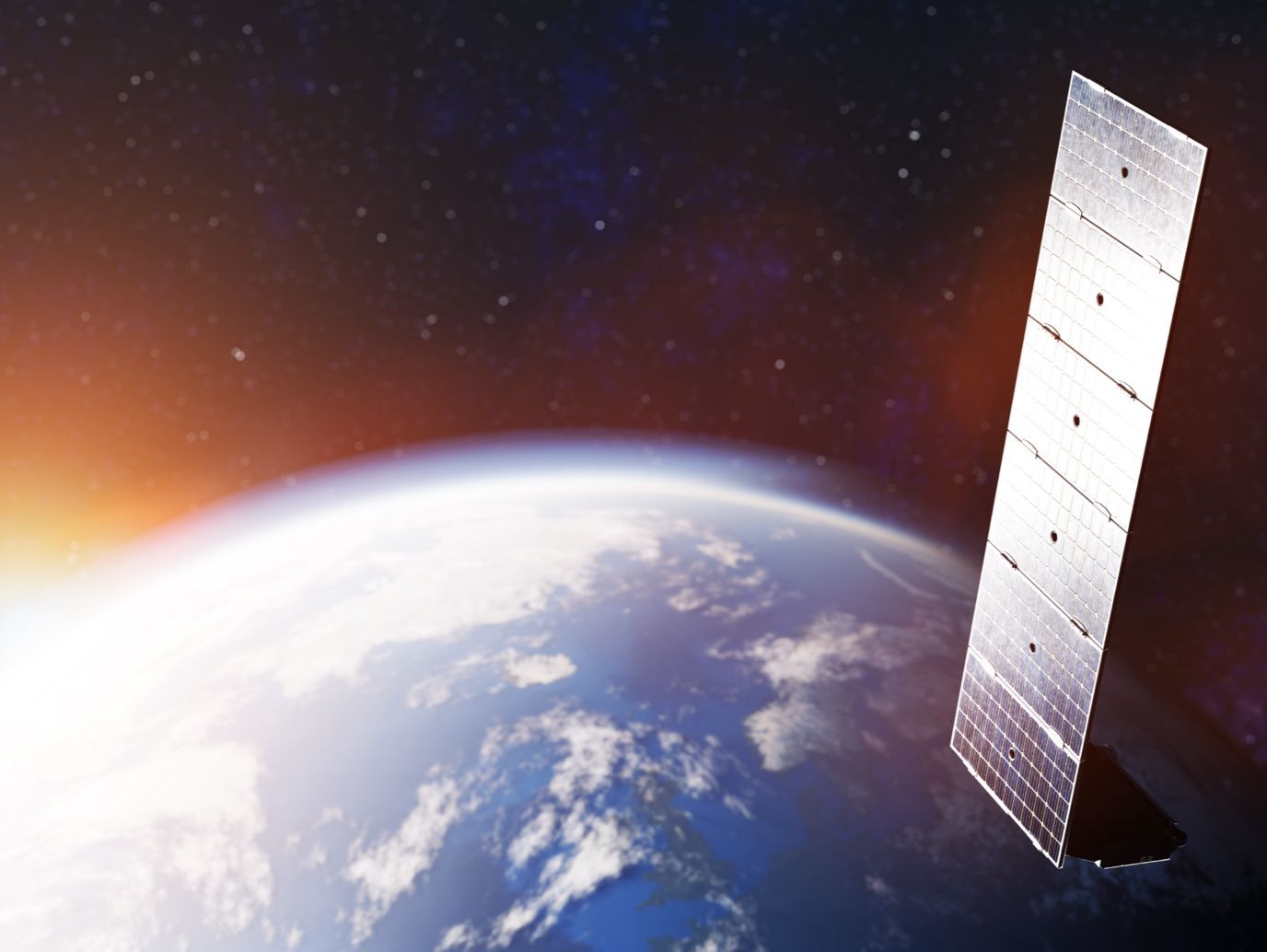
China to compete with Starlink? (Image: Adobe)
China expand commercial launch capabilities, plan a third mega-constellation, and strengthen international relations
China is of course one of these competitors, and is now demonstrating the utilisation of its own commercial sector in order to gain more leverage in the space sector. According to Blaine Curcio from satellite consultancy firm Novaspace, up until 2014 “…100 percent of space activity [in China] was done by the state.” However, between 2015 and 2021, their commercial industry grew 22.3% per year, and is on course to be valued at $320 billion in 2024.
While China are still some way behind the industry leaders SpaceX, we are set to see some familiar activity coming out of China in the coming months and years. Chinese company Hongqing Technology, linked closely to commercial launch company Landspace, has this week notified the International Telecommunications Union of its planned 10,000-strong satellite mega-constellation, named Honghu. These plans come after similar announcements regarding additional mega-constellations, named Guowang and Starlink G60, to consist of 13,000 and 12,000 satellites, respectively.
The announcement regarding Honghu seems likely to be beneficial for Landspace as well, who are developing their own reusable medium-lift rocket, named Zhuque-3. It does appear then that a SpaceX model is being replicated here, whereby satellites are built, launched and operated by the same entity (in this case Landspace holds a 48% share in Hongqing Technology).
Curcio also noted that on China they see the use of commercialisation as way of speeding up innovation, and supplying the nation with the capability to lift thousands of satellites into orbit. However, analysts also believe that the birth of the growing private sector is not to compete with SpaceX on the international market, but rather as a national security and defence imperative, particularly after witnessing how Starlink has worked so successfully in these areas.
However, there is clear evidence that China is also utilising its space capabilities as a means of establishing new partnerships and building international relations. They are successfully using their space station, Tiangong, for coopertaive missions and have made it available for use by all nations. They are also working with the United Nations Office for Outer Space Affairs (UNOOSA) to host international projects. This week China also launched a multi-mission communication satellite, PAKSAT MM1, a joint venture with Pakistan, and their Chang’e-6 lunar mission is carrying international payloads from Pakistan, France and Sweden.
While independant space capabilities are a national imperative for China, we clearly see ongoing evidence that they are also utilising this as a means to strengthen international relations.
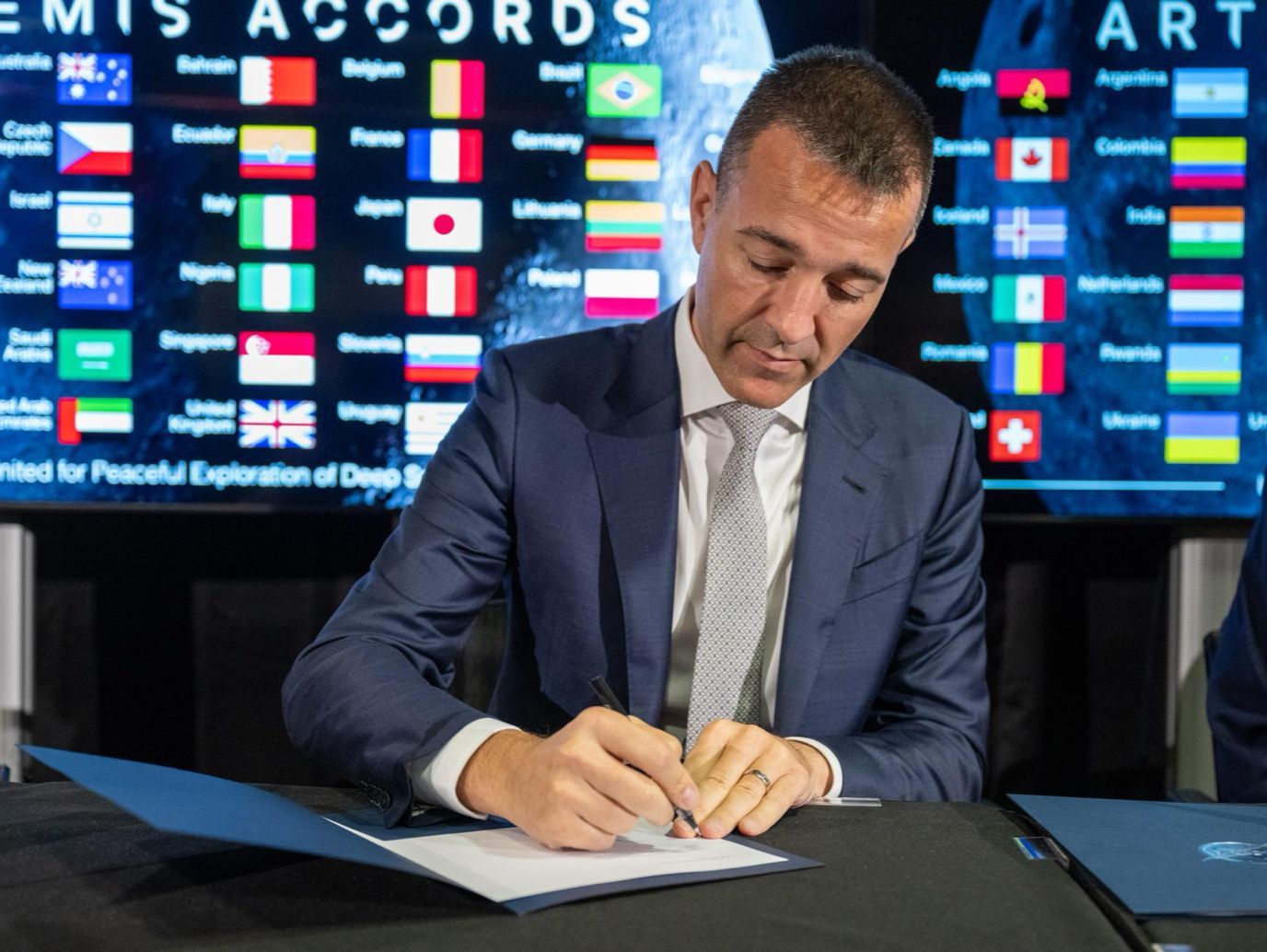
Slovak minister signs Artemis Accords (Image: NASA/Keegan Barber)
Chang’e-6 set for lunar landing, Korea aim for the Moon, US gain Artemis Accords members
Competition - or even the “new space race” - is well underway on the Moon. Since the beginning and 2023 until now we have seen six attempts to land on the Moon. These include the first ever successful commercial lunar mission, and the fourth and fifth nations to land softly on the surface (India and Japan, respectively).
China is set to land their latest mission, Chang’e-6, this weekend, after launching on its journey on May 3rd, and has been waiting in lunar orbit for the optimal conditions to land. The mission is now due to land on June 1st, and begin its primary goal of retrieving samples from the far-side for the first time. The mission also represents the broader Chinese aim of also establishing a permanent lunar presence under their International Lunar Research Station (ILRS) project, which is now supported by 23 nations and organisations.
The mission will also be followed by Chang’e-7 in 2026, which will study the lunar surface for signs of water ice (among other tasks), and will consist of a relay satellite, an orbiter, a lander, a rover, and a small flying probe. Furthermore, Chang’e-8 will launch in 2028, as part of its plans to construct their lunar station. It will continue to carry-out physical investigations of the Moon and also provide experiments in relation to in-situ resource utilisation (ISRU), a key component to establishing a long-term presence on the Moon.
At the moment the race appears mostly to be between the two space heavyweights, the US and China. While China are gaining partners through their ILRS project, the US have gained two more signatories for its outer space regulatory framework the Artemis Accords, with Peru and Slovakia joining this week. The Accords lay out rules and norms for activities on the Moon and outer space, and critically they also permit the utilisation of space resources, an area not comprehensively governed in any universally recognised legislation, such as the UN Outer Space Treaty (OST).
South Korea, another member of the Artemis Accords, have this week laid out their long-term plans for space exploration, after officially opening its new space agency this week, the Korea AeroSpace Administration (KASA). As well as aiming to create a privately-led space ecosystem, the agency will also lead the nation’s efforts to land on the Moon by 2032, and Mars by 2045.
Competition is growing on the Moon, and while recent landings have proven the success of more efficient and accurate landing technologies, they also represent an increasingly populated area which still lacks clear and comprehensive international rules and governance. Issues such as resource utilisation will be discussed at upcoming events such as the annual meeting of the UN Committee On Peaceful Uses of Outer Space (COPUOS) and the Working Group on Space Resources.
The efforts made here still stand as the best chance to achieve universal agreement on outer space affairs. However, while competition may be driving innovation, it also highlights the legal challenges we face in order to build and maintain a peaceful and sustainable future.
Share this article

